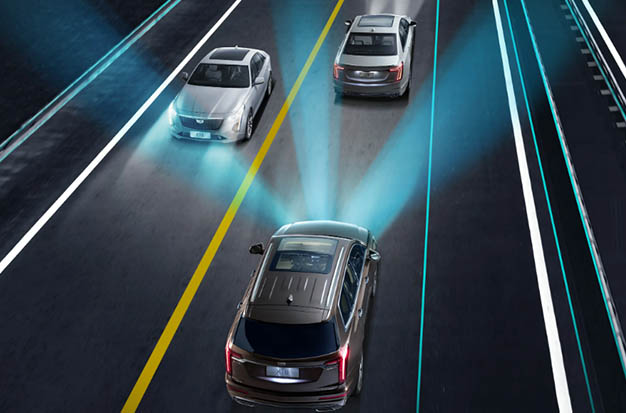
How and When Do You Communicate With Brake Lights To Prevent Car Accidents
In a crowded mall, you can talk to people or use non-verbal cues to communicate. In addition, a walking collision is unlikely to result in a serious injury, so the risks are minimal.
With a simple hand gesture, you can say a lot. When you’re driving and lack the standard signals you would use to communicate with other drivers, your ability to communicate through hand signals becomes crucial.
As a result, drivers hardly ever share any information. Your turn signals and brake lights are crucial because of this effect. You must use every tool at your disposal to let other drivers know where you’re going when there is poor communication.
What Are Brake Lights
In cars, the brake lights are typically found in the rear, close to the taillights. Although they are similar, brake and tail lights serve distinct functions when you are driving. Do you intend to make a turn? Your tail lights will begin to blink when you turn on your turn signals to signal other drivers that you are turning. Contrary to brake lights, they also illuminate whenever the vehicle is parked.
Only when you physically apply brake pressure do brake lights come on. Since their purpose is to alert drivers behind your car that it is slowing down, they frequently shine brighter than the taillights. As previously stated, brake lights are absolutely essential for a safe driving experience and should be treated as such.
How To Use Brake Lights
There aren’t any instructions on how to use brake lights because they operate on their own. As soon as you apply the brakes, your lights turn on for you. For turn signals, you must manually turn them on, and it is best to do so every time you make a maneuver in your vehicle. That holds true for lane changes, left and right turns, and turning.
Most cars have a simple wiring system for the brake lights. You have the lights themselves at one end. bulbs in sockets connected to a wiring harness. The brake switch is at the other end, and when the pedal is depressed, contact is made, completing the circuit. The system is powered by the vehicle’s battery.
These lighting systems were created to make other motorists aware of what the vehicle’s driver is doing. Brake lights, turn signal lights, emergency flashers, headlights, and other systems that are optional depending on the vehicle or vehicle option packages, such as driving lights or fog lights, are examples of how these systems have developed alongside the automobile. As well as ensuring other drivers’ safety, these systems also ensure your own.
What Are Turn Signals
Changing lanes is the first essential turn signal use. Lane changes while driving happen frequently, but they frequently result in accidents. By using your turn signal, you alert other drivers to what you’re about to do and give them time to make necessary adjustments. For turns, there is the second. Your actions will differ from what other drivers anticipate whether you are turning right or left. That’s why you have to make it clear what you’re planning.
Three fundamental hand signals are used by drivers:
- Slowing down or stopping – indicated by extending your arm downward with your palm facing backward
- Left turn – indicated by an arm straight out through the window
- Right turn – indicated by extending your arm at a 90° angle upwards
When To Use Hand Signals
You can usually rely on your car to communicate with other drivers on its own. The brake lights in the rear of your car will turn on as you apply the brakes to slow down, alerting other drivers to your change in speed. You must use the correct turn indicator when you are about to make a turn. Drivers can foresee your actions thanks to either of these two distinct signals.
The failure of your brake lights or turn signals can be somewhat dangerous because this communication is crucial for driving safely. The messages you would typically send with your brake lights or turn signals can, however, be communicated using various hand signals. This can let other drivers know your intentions so that no sudden movements or alterations in speed will catch them off guard.

Brake Lights Maintenance Tips
Fortunately, these lights require very little maintenance. You can either do it yourself or hire a professional to replace a light when it goes out. The service will be very inexpensive in either case. We advise performing monthly checks if you want to know when your lights are out. At the very least, try to get your oil changed at a place that does these tests for you.
When someone doesn’t ask your permission before doing something, it can be one of the most annoying experiences on the road. You should always use your turn signals and make sure your lights are in working order to prevent making this mistake yourself. You can then guarantee your own safety as well as the safety of every other motorist on the road.
Why You Should Replace Them And How To Check Rear Lights
Your brake lights’ sole purpose is to signal to other drivers that your car is slowing down or coming to a stop. This is especially useful when visibility is impaired by conditions like fog or low light at night. Rear brake lights are red because they are visible from a distance and because red light, as opposed to other visible light, is not scattered by air molecules. If not fixed, one may receive a ticket or, even worse, may be involved in an accident.
The National Highway Traffic Safety Administration (NHTSA) started requiring a third brake light for all new cars in 1986. In 1994, the organization expanded that requirement to include all brand-new light trucks. Since it was put into place, there have been roughly 200,000 fewer accidents, 60,000 fewer injuries, and more than $600 million less in property damage each year.



Average Rating